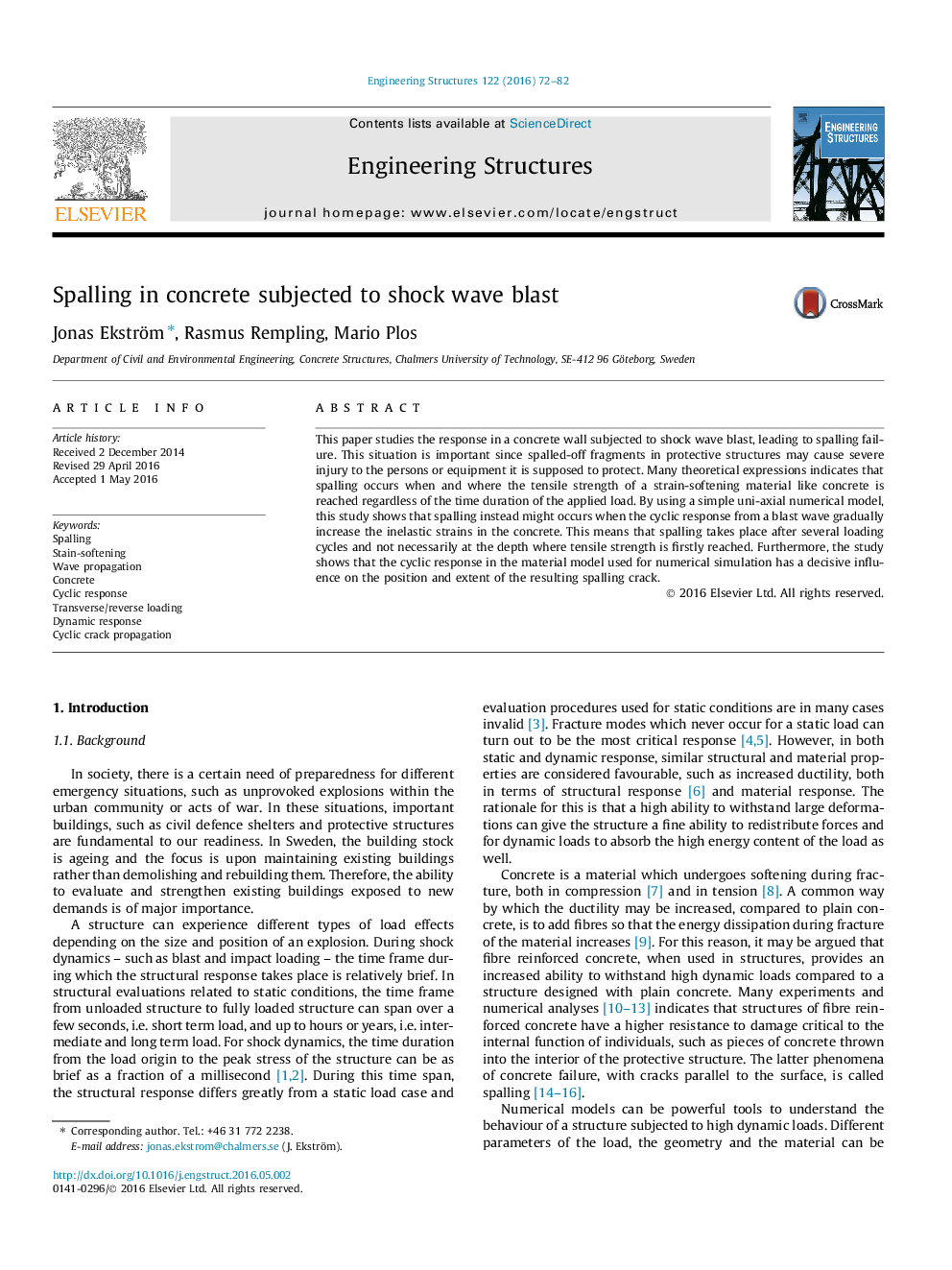| Article ID | Journal | Published Year | Pages | File Type |
|---|---|---|---|---|
| 6739871 | Engineering Structures | 2016 | 11 Pages |
Abstract
This paper studies the response in a concrete wall subjected to shock wave blast, leading to spalling failure. This situation is important since spalled-off fragments in protective structures may cause severe injury to the persons or equipment it is supposed to protect. Many theoretical expressions indicates that spalling occurs when and where the tensile strength of a strain-softening material like concrete is reached regardless of the time duration of the applied load. By using a simple uni-axial numerical model, this study shows that spalling instead might occurs when the cyclic response from a blast wave gradually increase the inelastic strains in the concrete. This means that spalling takes place after several loading cycles and not necessarily at the depth where tensile strength is firstly reached. Furthermore, the study shows that the cyclic response in the material model used for numerical simulation has a decisive influence on the position and extent of the resulting spalling crack.
Related Topics
Physical Sciences and Engineering
Earth and Planetary Sciences
Geotechnical Engineering and Engineering Geology
Authors
Jonas Ekström, Rasmus Rempling, Mario Plos,
